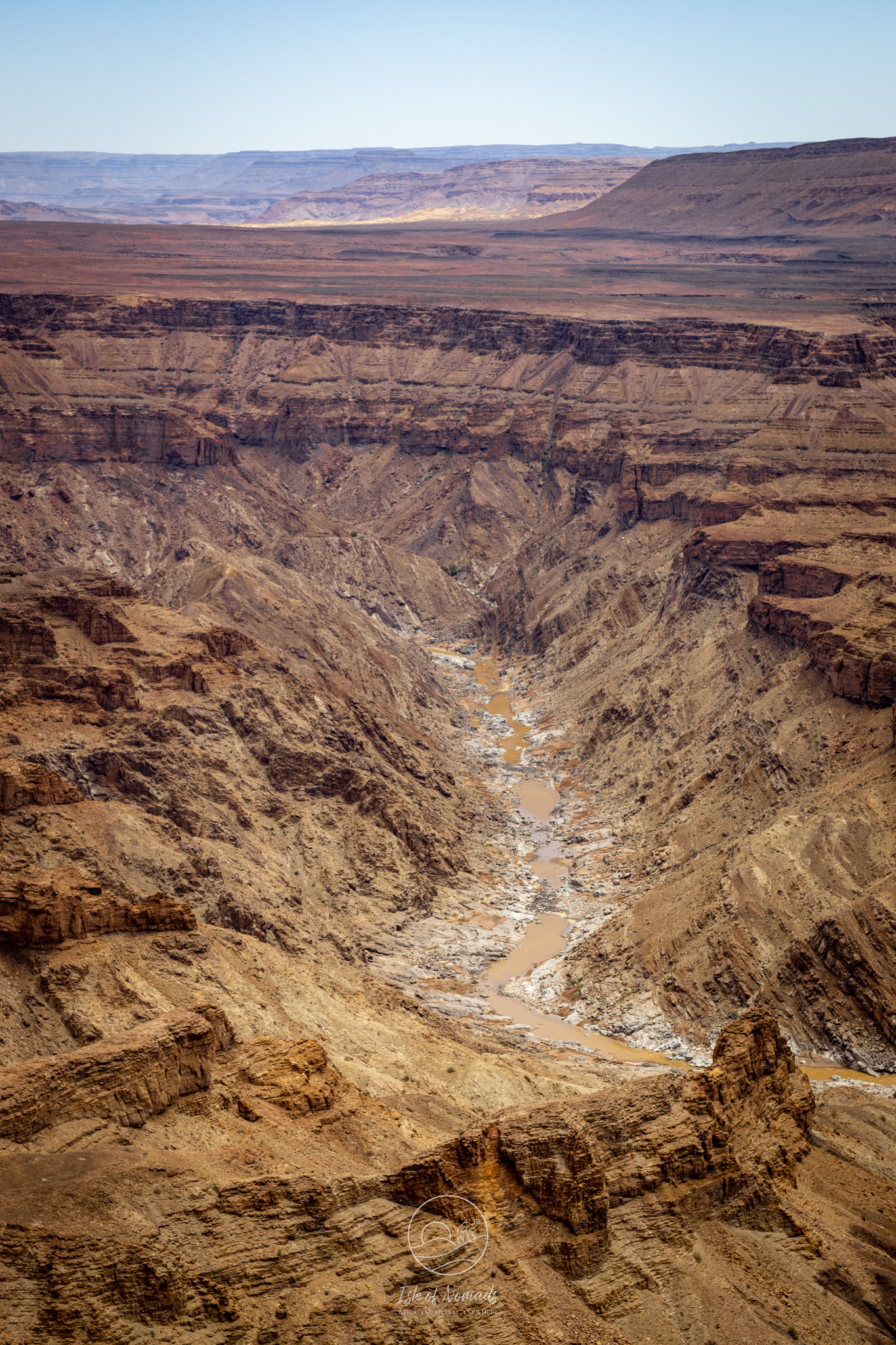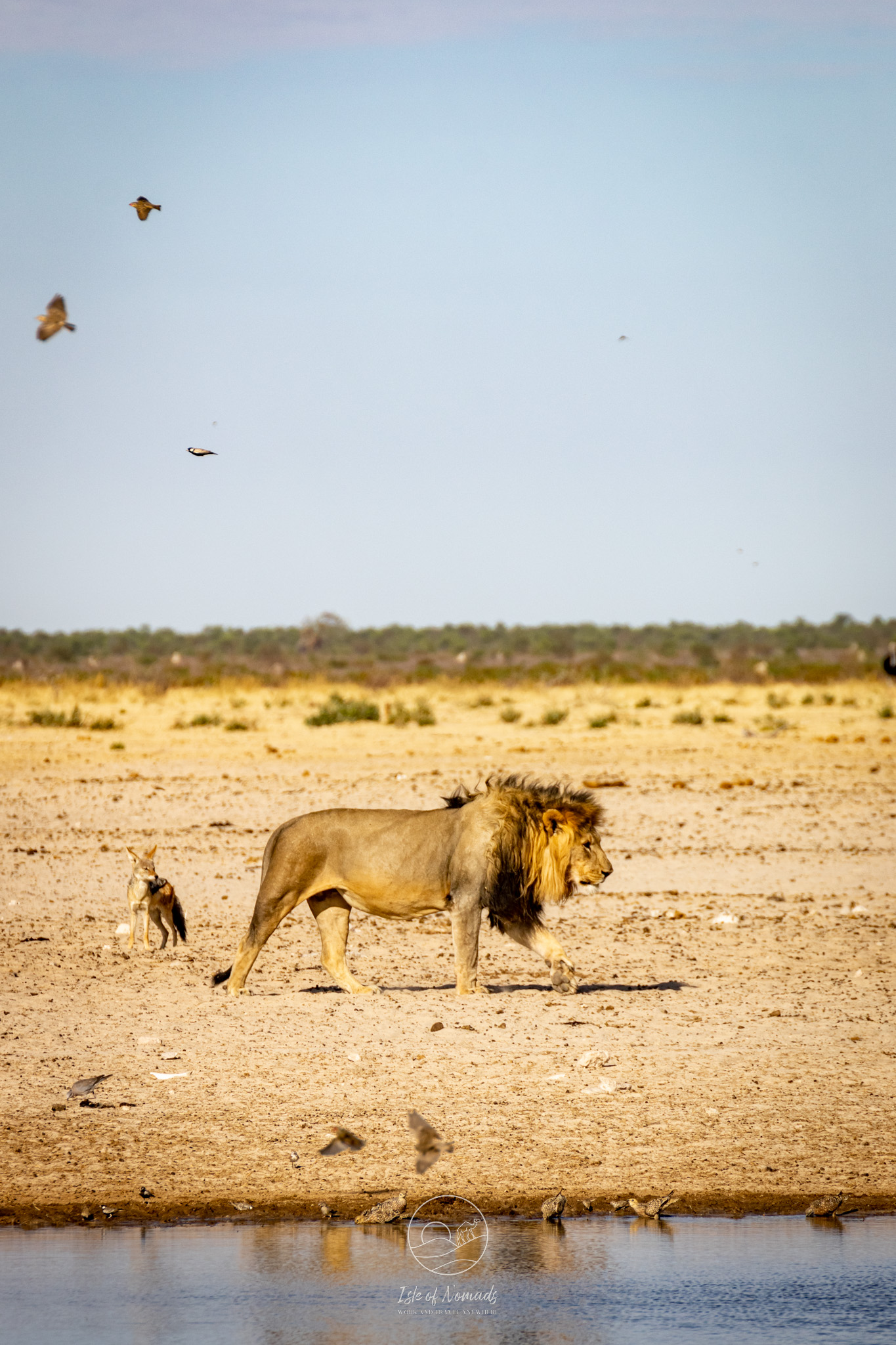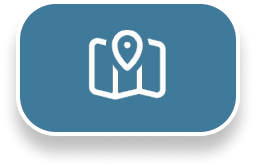The ultimate Namibia itinerary: Discover the highlights in 14 days

Content
Key information at a glance
| Daily budget: | ca. 50-100 USD/person/day |
| Itinerary length: | 14 days |
| Best time to travel: | Dry season (May to October) |
| Top sights: | Windhoek, Swakopmund, Etosha National Park, Sossusvlei, Fish River Canyon, Kolmanskop |
| How to get there: | Windhoek has regular international flights connecting to Europe, the US and other parts of Africa. For instance, there are direct flights from Frankfurt to Windhoek. |
| Country Overview: | Head here for a general overview over Namibia |
This itinerary is perfect if you have your own car - this does not have to be a 4x4 and does not need to come with a (roof)tent. If you are interested in more information on what the pros and cons of a 4x4 are and what would be the best car for your journey, ead to our article on which car to drive in Southern Africa.
Check out our fact sheet about Namibia to get a general overview of the country. If you are looking for a full list on where to stay, where to eat and hidden spots, check out our Travel Guide!
Is it safe to drive through Namibia?
In general, Namibia is a safe country to travel in and also to drive in. However you still should take a few precautions and follow a few rules:
- Avoid driving in the dark: Try not to drive before sunrise or after sunset. It’s tougher to spot wild animals on the road at night, and some minibuses tend to drive recklessly during these hours.
- Keep valuables out of sight: Whether you’re in a restaurant, your accommodation, or your car, don’t leave bags or electronics visible. Even something that looks like it might contain valuables can attract thieves.
- Stay aware of your surroundings: If you see movement along the roadside, slow down until you know exactly what it is and where it’s headed. Also watch out for distractions in public areas — if someone suddenly tries to get your attention, another person could be aiming to pickpocket you.
- Be cautious at ATMs: Don’t accept help from strangers or even the security guard. If you’re having trouble, step into a bank branch and ask for assistance.

What to Know Before You Drive
International Driver's License: If your current license isn’t in English, be sure to arrange an international driver’s license before traveling in Namibia.
Check Your Car: Look over your rental carefully, especially the spare tire. The roads can have potholes or gravel, which means you might get a flat tire. We didn’t experience this ourselves, but being prepared is always safer.
Carry Enough Water: Always keep a good supply of water in the car, particularly when heading into less populated regions. We usually kept between 5 and 10 liters in the trunk just in case.
Watch your fuel level: Fill up when you can, even if you aren’t close to empty. In rural zones, gas stations can be few and far between. If you’re venturing off the main routes, consider an extra fuel can.
Entertainment for Long Drives: Namibia is a large country, and 8-hour drives are common. We relied on audiobooks to keep us company — two we especially enjoyed were “The Memory of Light” and “Secondhand Time: The Last of the Soviets.”
Day 1: Windhoek
Arrive in Windhoek on day 1, pick up your car and wander around the city for a bit. We have to be honest - we find there is not much to do or see inside the capital, the real allure of the country is outside of the city.
If you have time, you can go to the Christuskirche and the Independence Memorial Museum. Roberto's Pizzeria is a good option for lunch or dinner. Go to bed early as you have a long driving day ahead of you tomorrow!


Day 2-3: Fish River Canyon
A long day of driving (620km, ca. 6h 30min) gets you to the region around Grunau where you will spend two nights. We stayed and can recommend White House Guest Farm. While the guest farm is modest, its clean and the hosts are lovely.
Spend a full day to visit Fish River Canyon - this spectacular canyon is one of the largest in the world. It offers some dramatic vistas and excellent hiking opportunities. Stop at least at one viewpoint. You can take a break and get coffee at the canyon roadhouse on the way. As of 2024, the park entrance fee is NAD160 (approximately US$11) per person.
If you love hiking, are fit, have a bit more time and are visiting during the Namibian winter, you can even hike the whole length of the canyon. This takes 4-5 days and is quite an endeavour - head to the Stingy Nomads Blog if you'd like to know more about this option.


Day 4-5: Luderitz and Kolmannskop
After 450km (around 4h 30min) of driving you will reach Luderitz on day 4. Spend two nights here.
You should set aside a full day to explore the eerie, sand-swallowed town of Kolmanskop. This was once a bustling diamond mining town. Now it is slowly being covered in sand - in a few decades, this ghost town will vanish entirely beneath the dunes. The history of Kolmanskop is captivating: it sprang up in only a few months when a laborer named Zacharias Lewala discovered a diamond here. This find led the German Empire to declare the area as "Sperrgebiet" (Forbidden Territory) and quickly capitalize on the extensive diamond resources.
For the best pictures, arrive early in the morning when the sand is still untouched from the footsteps of other tourists. The entry is N$130 Namibian dollars (ca. 7 USD) for a standard entry from 8 am to 1 pm or N$330 Namibian dollars for an all-day ticket, including sunrise and sunset. We spend around 2-3 hours wandering around the ruins and taking pictures.
If you really love ghost towns, you can join a tour that takes you to Elizabeth Bay Ghost Town inside the Sperrgebiet. As this is inside the restricted area, you cannot go by yourself. It is also quite inaccessible as it is much deeper into the desert in the South of Luderitz.
Where to stay in Luderitz: We weren't super happy with our AirBnB in Luderitz, so just based on research and reviews we recommend Tranquillity Guest House, for example. For a full list of where to eat and stay, head to our Travel Guide.


Day 5-7: Sossusvlei and Deadvlei
After Luderitz, drive the 500km (ca 6 hours) to Sesriem, the gateway to the NamibRand Nature Reserve. If you don’t have your own camping gear, it can be a bit challenging to find a budget-friendly accommodation in the area. After some research and back and forth, we chose to stay at Desert Quiver Camp. Although the experience was modest given the price point, I am convinced that this camp offers the best value in the area. Ensure you're well-prepared with water and supplies before heading to the camp: it is self-catering and buying some food and groceries in the desert can be quite expensive.
Spend three full nights in Sesriem. This will give you ample opportunity to explore all of the main sights in the park: Deadvlei, Sossusvlei, and Big Daddy Dune. Non 4x4 vehicles can be parked in the designated pakring lot, and from there a shuttle service will get you to and around the park. Entrance fees for non-residents are 100 NAD per person, and shuttle services cost an additional 150 NAD per person.
Within Sesriem, several dunes offer spectacular sunrise and sunset views. Dune 45 is the most popular. It takes about 20 to 30 minutes to climb up the dune and the panoramic views from the top are truly spectacular!
If you have to choose just one dune to hike up, I would advise you to pick Big Daddy Dune - from its peak, you have an expansive views of the desert and Deadvlei below. Deadvlei is the striking white clay pan that is dotted with the charred remains of ancient trees - usally that's the image that comes up when you google Namibia. You can then run down the dune and then walk over the Deadvlei Salt pan. I have to say that at first I was a bit hesitant to run down the huge dune, but it turns out that it's super fun! Once down you will walking through the scorching heat of Deadvlei. It's a crazy thought that this area was once full of water!

A short 2km hike from the main parking area will bring you to Hidden Vlei, a smaller salt pan. You can often see wildlife here - especially when part of the pan is flooded. We saw quite a few Oryx very closeby when we visited!
If you still have energy to climb one more dune after walking in sand all day (spoiler alert: it is incredibly exhausting!), consider including Big Mamma Dune. You could also add a quick side trip to Sesriem Canyon. While beautiful, it is not as impressive as Fish River Canyon and other famous canyons - we visited and were a bit disappointed.
Something you definitely shouldn't miss while in the Namib Desert is stargazing! The Namib Desert is said to offer one of the world’s most stunning night skies. It's so far from any cities that you can see an incredible amount of stars. On a clear night - which is almost a given here - you can spend hours marveling at the beauty overhead.

Day 8-10: Swakopmund and surroundings
Start Day 8 with the 350km drive (about 4 hours and 30 minutes) from Sesriem to Swakopmund. Along the way, don't miss the opportunity to stop at the Tropic of Capricorn Sign for a fun photo. If you arrive in Walvis Bay around lunchtime, you could get lunch at Godenfang Restaurant Walvis Bay. Afterwards, make a visit to the Flamingo Lagoon. Continue driving to Swakopmund. In the afternoon, you can wander around the town for a bit.
The next day is spent in Swakopmund, to enjoy some of the great outdoor activities. We did a Fat Bike Tour through the desert of which I have to be honest I was quite sceptical at the beginning - how fun can just biking on sand be? Turns out, a lot of fun. If you are visiting from July to November, you could also join a whale or dolphin watching tour with Swakopmund Adventures.


You can either do Spitzkoppe as a day trip from Swakopmund (1h30min driving time one way) or spend one night there (Day 10). The 1728m high peak rises dramatically from the flat surrounding plains. Its granite is more than 120 million years old! We later discovered they have a beautiful desert lodge there - it's expensive, but looks really nice.
For most hikes in Spitzkoppe, you need to arrange a guide in the morning upon arriving there (between 6:30 am and 8:30 am). We were unaware of this when we arrived, so we opted for the two shorter hikes that don't require a guide: Bushman’s Paradise and Small Bushman’s Paradise. Even though we couldn't spend the day hiking, I found that the journey to Spitzkoppe was absolutely worth it. The mountain itself and the surrounding park are beautiful!
For a full list of where to eat and where to stay when in Swakopmund, check out our Travel Guide.

Day 11-14: Etosha National Park
On Day 25, drive to Etosha National Park - a trip that will take around 5-6 hours (500km). If you like shipwrecks and a bit more unique sights, you could take a brief 30-minute detour from Swakopmund along the coast towards Hentiesbaai before heading inland. There, you can make a stop at the Zeila Shipwreck. Here you will see with your own eyes why this area is called the Skeleton Coast: even if sailors survived the harsh sea and brutal winds, on land they were then met with the harsh desert that stretches hundereds of kilometres inland.
Spend at least two full days (Day 12 and 13) in Etosha National Park. Get up early on both days so you are inside the park at sunrise - you are most likely to see lions in the mornings when it is not as hot.
Deciding where to stay — inside or outside the park — is an important decision. We chose to stay outside the park at Buschberg Guestfarm, as we found it difficult to find well-rated, affordable accommodation within the park. But this is particular to Cordt and my decision making: I hate nothing more than to pay a lot of money for bad service and/or a dirty and run-down accommodation and would rather support a small homestay, even if I have to drive longer to reach my destination. That being said, I know quite a few people that stayed inside Etosha and really enjoyed it - if you do, you are the first in the morning in the park and can also go on night safaris.


Etosha is expansive, so to make the most of your time, consider booking accommodations at different ends of the park. This will minimize the time you need to spend driving back-and-forth, and you can focus on spotting as much wildlife as possible.
On Day 14, your trip to Namibia will sadly already come to an end! Make your way back to Windhoek to catch your flight out.



